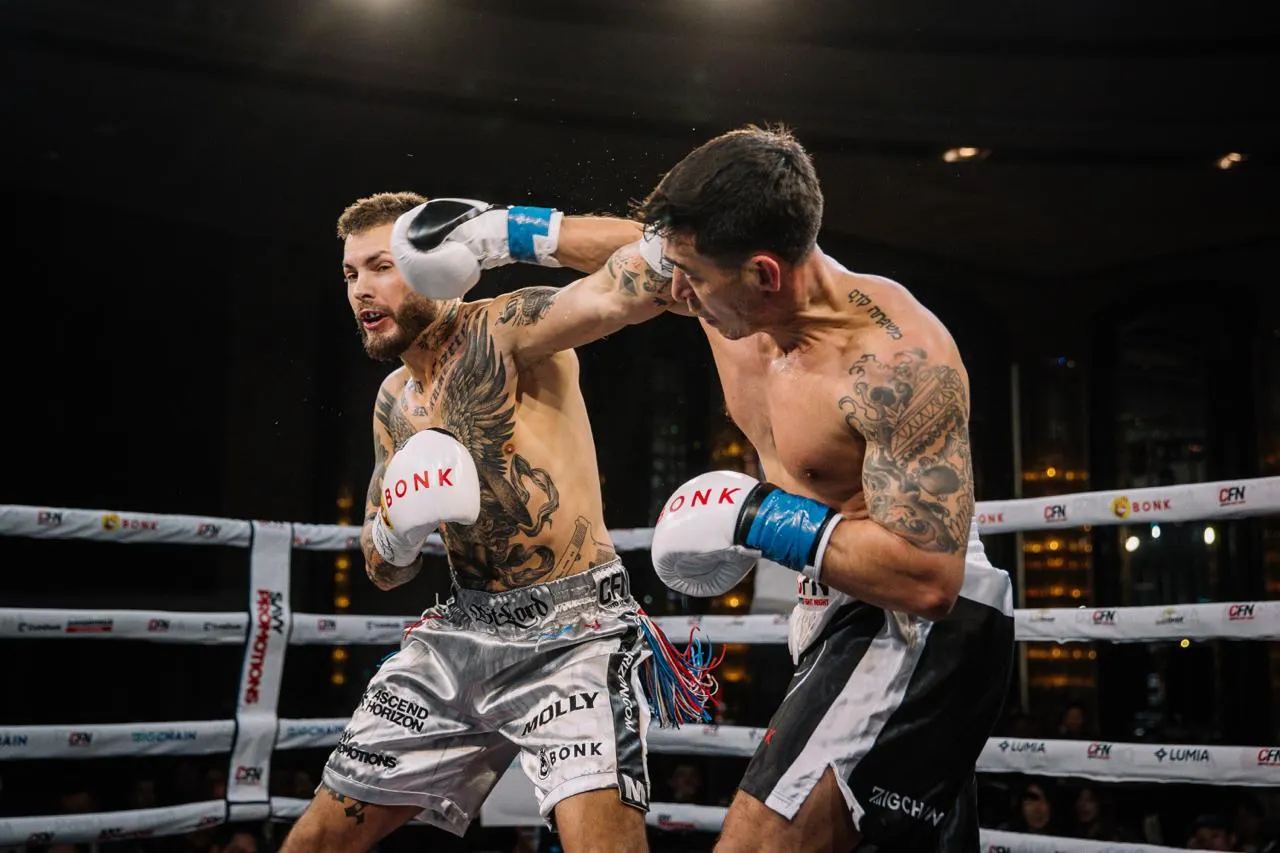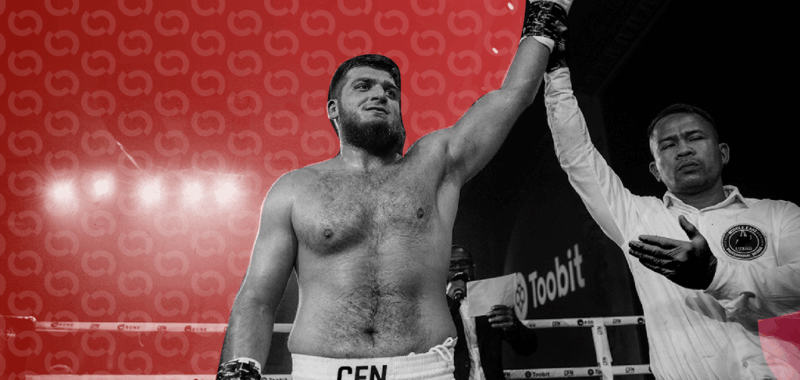In brief
- Crypto Fight Night pits traders and industry influencers against each other amid crypto conferences.
- It started as a “social experiment” coming out of the pandemic, but now has its own production team.
- The promotion has spawned a number of viral moments and become a networking hub amid busy crypto events.
Two light heavyweight titans brawled it out in what, by all accounts, was a violent and enjoyable fight. But the crowd didn’t explode like other fight events I’ve attended when Tiko—who has a sizable following on social media—TKO’d his opponent in the second round with a ferocious overhand right.
Looking across the attendees in the hall and speaking to Crypto Fight Night’s founder, it’s clear that this is more than just a night of influencer boxing. Instead, it’s a premier networking event held during crypto conferences with the hopes of making the industry feel less antagonistic, or player vs. player—despite the obvious irony.
To many, Crypto Fight Night is a welcome change from the mixers that dominated the week of Token2049 that have no ice breaker or distraction aside from alcohol. Awkward silences are replaced by devastating knockouts, and tactical chess battles are suddenly an opportunity to pitch your business to the person sitting next to you.
YOU CANT SPELL TIKO WITHOUT T K O 🤪🤪🤪🤪@tikooww GETTING A HUGE STOPPAGE IN HIS DEBUT 🧨🧨#CFN |📍TROY Dubai | May 1st | Streaming on YT & X | 🎟️ link in bio]
.
.
.
(𝘛𝘩𝘪𝘴 𝘦𝘷𝘦𝘯𝘵 𝘥𝘰𝘦𝘴 𝘯𝘰𝘵 𝘦𝘯𝘥𝘰𝘳𝘴𝘦 𝘰𝘳
𝘱𝘳𝘰𝘮𝘰𝘵𝘦 𝘵𝘩𝘦 𝘱𝘶𝘳𝘤𝘩𝘢𝘴𝘦, 𝘴𝘢𝘭𝘦,… pic.twitter.com/yXCYJ7BLkW— Crypto Fight Week (@CryptoFightWeek) May 1, 2025
How it all began
Crypto Fight Night started as a “hobby” and sort of “social experiment” coming out of the pandemic, said co-founder Rahul Suri, an entrepreneur and investor based in Dubai. After a year of not being able to connect with people in-person, Suri set out to bring together friends he’d met online, all under one roof, to connect with a sports event as the backdrop.
“The first one was insane. There were so many people [I] met for the first time, people who were just nicknames and avatars, and now they’re a real person with a real name,” he told Decrypt. “The experience of Crypto Fight Night is highly networking-focused. I find it’s a lot more organic to network at a sports event than it is in other formats.”
For the first two events, Suri tapped established production teams led by two-time world professional boxing champ Amir Khan, then later Frank Warren of the prestigious Queensbury Promotions. While successful, the organization kicked things into third gear for it next event by hiring a team to handle matchmaking, production, logistics, marketing, and the rest.
Now on its ninth event, the organization has grown through a number of viral moments—none bigger than when crypto influencer titans Bitboy and Ansem faced off in the ring in December 2024.
Both fighters gave it a valiant effort, but their cardio levels failed them—so much so that Bitboy was forced to take a puff of an inhaler and put on an oxygen mask. He wasn’t disqualified due to the fight being under exhibition rules, ultimately creating an image that has become canonical for any crypto memer.
A unique challenge in the influencer fighting space is ensuring that fighters are equally matched, despite their lack of experience. As such, Suri said he’s composed a team of four dedicated matchmakers, and claims to sometimes bring in external matchmakers with experience at professional MMA organizations PFL and Bellator.
Angus Jenkins was the sole matchmaker for the influencer fights at the Hong Kong event in February, with previous experience found in boxing management, journalism, and social media. For that event, he watched previous fights if they’d had any, and reviewed sparring and pad work footage sent by fighters in order to craft match-ups.
“The main [challenge] is convincing very wealthy Web3 influencers and entrepreneurs to take time from their daily grind to get punched in the face on a big stage,” Jenkins told Decrypt. “There’s a lot on the line, as they’re already successful, and stepping on the stage is an opportunity but also a risk.”

Player vs. player
Suri believes that boxing naturally translates to a crypto audience, due to the innate player vs. player nature of trading. After months of tirelessly battling over capital in the meme coin trenches, the industry gathers to break bread as influencers bloody each other in the background.
Before, during, and after the fight, a continuous murmur of conversation can be heard throughout the hall. Most of the time, it appears that attendees aren’t all that fussed with what is happening inside the ring, instead more focused on establishing a connection with the people next to them.
This networking ethos runs throughout Crypto Fight Week, in the lead-up to the fights. Suri said that the organization hosted an exclusive 100-person event on the pre-fight Monday for fighters, sponsors, and ambassadors to network. The weigh-ins before the fights are also designed in an “open format” to promote networking.

The Dubai event was a throwback to the organization’s roots, Suri said, as it was hosted in the same venue that CFN’s second and third events were held—Troy Dubai. The venue was formatted as a “VIP show,” segregating attendees with basic tickets from those with more exclusive access.
“I always felt that these are some of the most electric nights,” Suri told Decrypt.
While Crypto Fight Night might not be the event for die-hard fight fanatics—it certainly didn’t match up to Fury vs. Usyk—it definitely acted as an alluring social lubricant in the middle of a busy crypto conference week.
“We somehow stumbled upon a way of making Crypto Fight Night, very simply, cool,” Suri told Decrypt. “Now, as we scale it and grow it, we continuously try not to go away from that one element. And, as long as it stays cool and as long as it stays fun, we’re having a good time.”
Edited by Andrew Hayward

